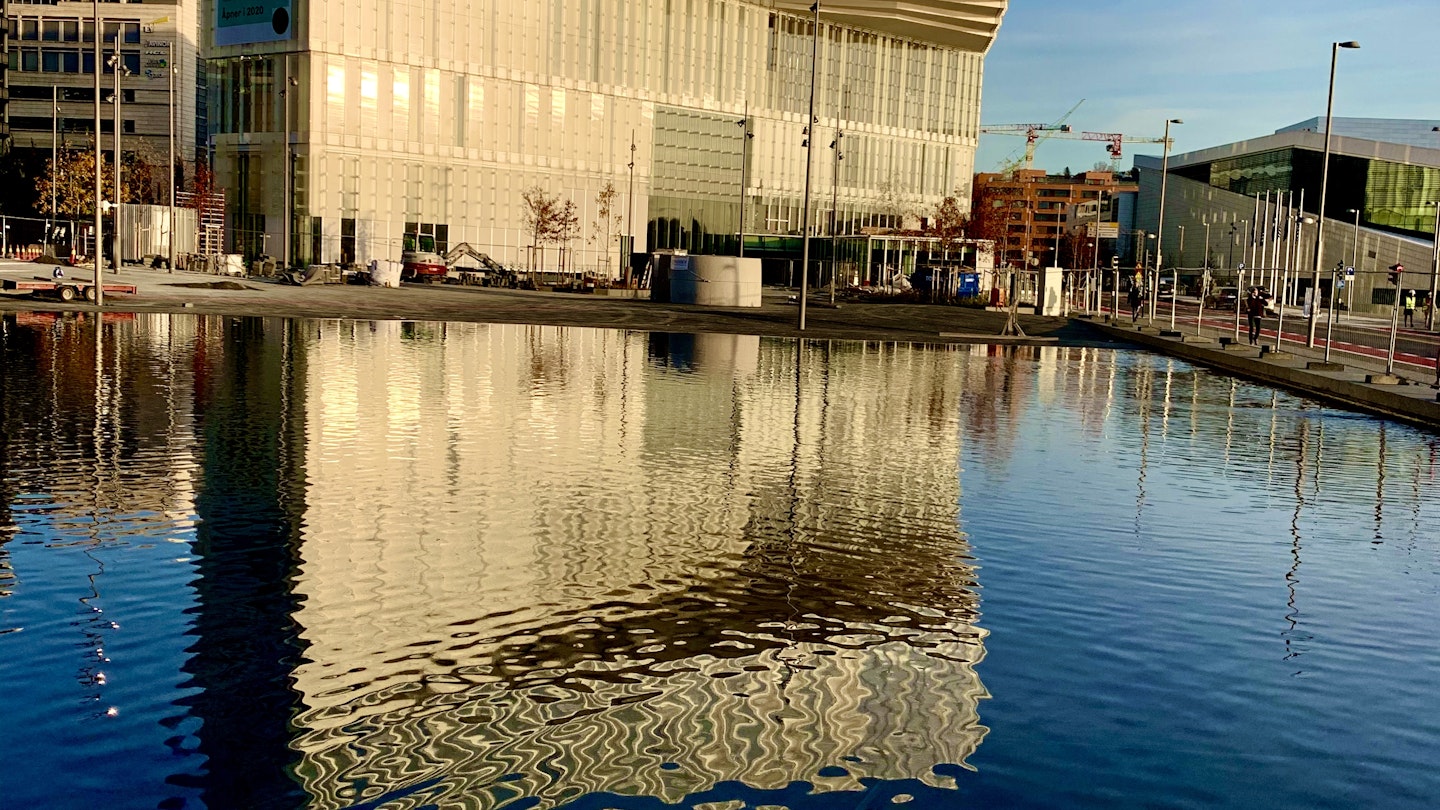Deichman Bjørvika: Oslo’s Eco-Friendly Library
Always at the forefront of sustainable innovation, Oslo opened the new Deichman Bjørvika library to an eagerly expectant public on June 18, albeit with post-lockdown social distancing measures. Designed by Atelier Oslo and LundHagem architects, the modern, three-tiered library slots unobtrusively into the cityscape, giving the Norwegian capital an exciting new cultural landmark right on the waterfront – and an eco-friendly one at that.
The library cantilevers out to welcome visitors arriving from Oslo’s city centre and the central station. Built according to passive housing standards, the ultra-low energy building is environmentally sound as well as architecturally striking. Beyond its many thousands of books, it harbors a cinema, a children’s section with playful hiding spaces, open workshops, gaming zones, and cafés, plus plenty of inspiringly lit spaces to relax and read.

The fifth floor commands a phenomenal view of the city, Oslofjord, and its islands, rimmed by forested hills. It’s here you’ll also find the Future Library, a century-spanning art project that collects one manuscript a year from 100 authors (the books will be printed and published in 2114).
“Besides 450,000 books, you can watch movies with your friends, make podcasts, learn to play the piano, sew a dress, use the 3D printers, or just enjoy the view of Oslofjord and the architecture,” says Merete Lie, the library’s department director. “The building’s folding geometry provides structural strength, and the ground floor façade is completely transparent to enhance the feeling of openness and reinforce the connection with the city.”
Located near Oslo’s Opera House, the library is the latest addition to the revitalized port district of Bjørvika, whose other cultural standouts include the Astrup Fearnley Museum of Modern Art, the futuristic Barcode district and, as of fall 2020, the much-anticipated new Munch Museum.




